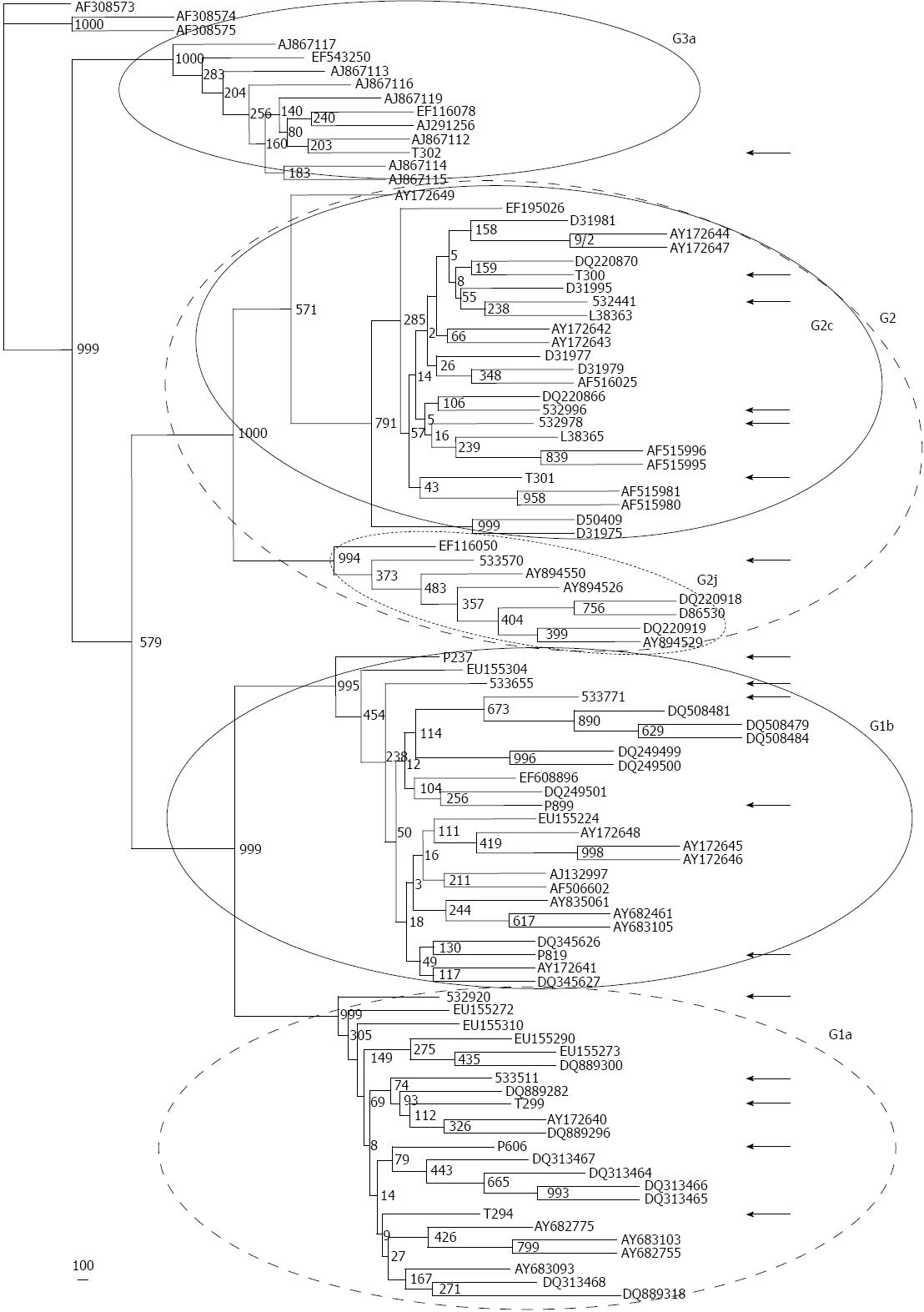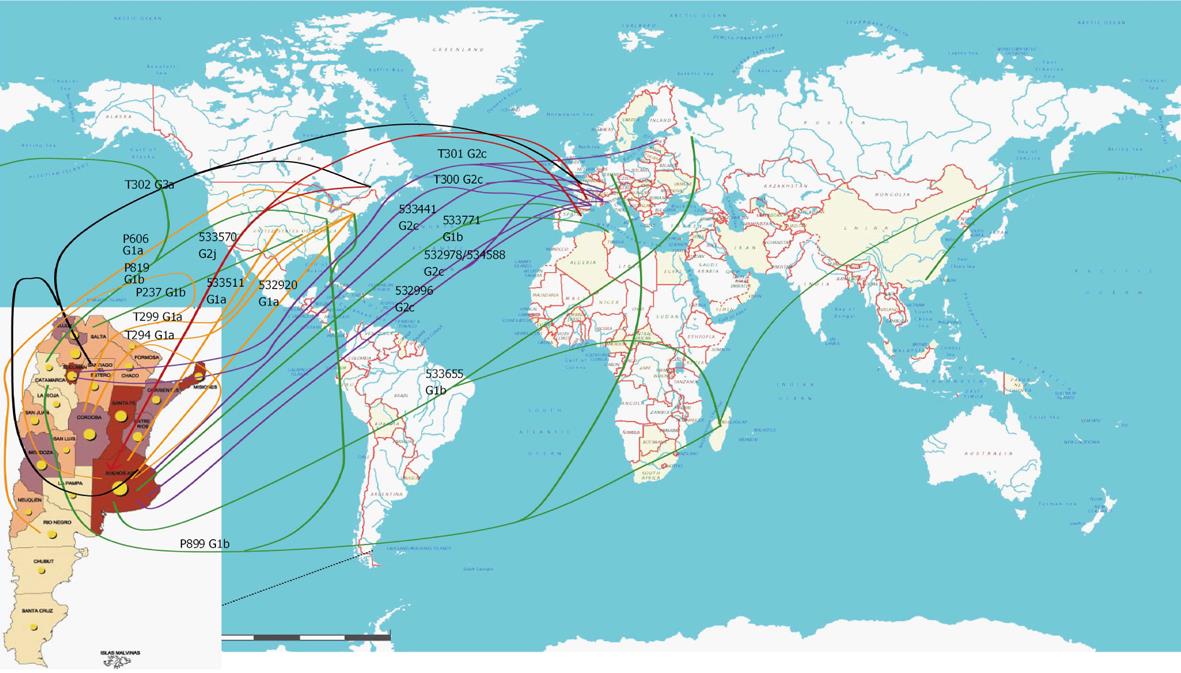Copyright
©2013 Baishideng Publishing Group Co.
World J Gastroenterol. Sep 21, 2013; 19(35): 5813-5827
Published online Sep 21, 2013. doi: 10.3748/wjg.v19.i35.5813
Published online Sep 21, 2013. doi: 10.3748/wjg.v19.i35.5813
Figure 1 Assignment of Hepatitis C virus subtype isolates according to the phylogenetic tree performed by the Neighbor-Joining method, after an NS5B alignment of Hepatitis C virus sequences obtained from the 17 Argentinian volunteers studied herein, as well as from 89 reference sequences (e.
g., those composing subgenotype groups G1a, G1b, G2c, G2j, G3a) downloaded from GenBank. A consensus tree is shown after analyzing 1000 replicate trees. A distance scale (in nucleotide substitutions per position) is shown. Arrows indicate Hepatitis C virus sequences derived from Argentinian volunteers.
Figure 2 Phylogenetic trees performed by the Neighbor-Joining method.
NS5B sequences obtained from the volunteers whose respective hepatitis C virus (HCV) isolates had been classified as HCV-1a (n = 5), HCV-1b (n = 5) or HCV-2c (n = 5) were respectively analyzed in panels A, B and C together with 100 HCV-1a, 100 HCV-1b or 81 HCV-2c sequences downloaded from the GenBank. The respective consensus trees are shown after analyzing 100 replicate trees for each HCV subtype. A distance scale (in nucleotide substitutions per position) is shown in each panel. Arrows indicate sequences obtained from Argentinian volunteers.
Figure 3 Each line links the Argentinian location of the sequence named on the top of the line with the world location/s of the most closely related sequence/s published in GenBank.
- Citation: del Pino N, Oubiña JR, Rodríguez-Frías F, Esteban JI, Buti M, Otero T, Gregori J, García-Cehic D, Camos S, Cubero M, Casillas R, Guàrdia J, Esteban R, Quer J. Molecular epidemiology and putative origin of hepatitis C virus in random volunteers from Argentina. World J Gastroenterol 2013; 19(35): 5813-5827
- URL: https://www.wjgnet.com/1007-9327/full/v19/i35/5813.htm
- DOI: https://dx.doi.org/10.3748/wjg.v19.i35.5813











